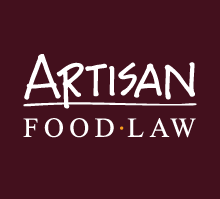How do we know when fish is sustainable and responsibly sourced?
Recently and within a few days of each other two reports emerged on the topic of sustainable fish. One from the PEW Environment Group and one from Marine Conservation Society which on the face of it appear to contradict each other on the extent to which Marks & Spencer offer sustainable fish. It is a case study which illustrates the difficulties inherent in present systems of accreditation and labelling of sustainable fish.
PEW asks some basic questions. Is fish produced according to a particular standard better than conventionally produced fish? How do different standards compare? PEW investigated published standards according to their performance on 10 environmental impact categories using a well-established methodology. While four out of the five top performing standards are organic, including that of the Soil Association, the standard used by M&S came bottom, or next to bottom, out of 20 standards on every measure applied.
The early adopters of quality assurance standards would frequently comment that a standard successfully applied guarantees that what you get has been produced to that standard. If the standard is poor in the first place, so is the outcome. Maybe that’s what is happening here?
The Guardian reported on the MCS survey findings highlighting the fact that the Co-op and M&S had been awarded a “gold rating for sourcing and promoting sustainable fish”. The MCS commended M&S for having the best overall seafood policy but it needed to do more work on the provenance labelling of seafood products. The environmental law group Client Earth had previously reported that some retailers, not M&S, showed a blatant disregard to where products came from.
PEW looked at standards of production whilst the MCS surveyed UK supermarkets. According to PEW, the performance of the M&S standard was poor which, if correct and the MCS is right, does not bode well for other UK supermarkets. PEW does conclude that:
“While many eco-labels have won consumer confidence, an alarming number of the standards ignore major environmental impacts or fail to set measurable limits.”
The overall conclusion, that most eco-label standards offer no more than a 10 per cent improvement on the status quo comes as little surprise.
So what is the average consumer to make of it all? Confusion is understandable, but it is impossible to resist the conclusion that standards of sustainable fishing and retailing practice have a long way to go before we can have any confidence in them.
Meanwhile, when you read the label on your next fish purchase don’t swallow the claims it makes hook, line and sinker. If you are satisfied, fine go ahead and enjoy the fish but be sceptical, curious and inquiring so you learn more and make a better choice next time.
The PEW report: How Green is Your Eco-label? A Comparison of the Environmental Benefits of Marine Aquaculture Standards can be found here. You can find the MCS report here, as it was reported in The Guardian here and Client Earth on fish labelling here.




